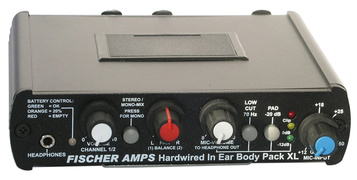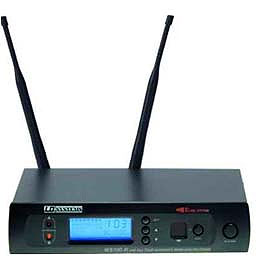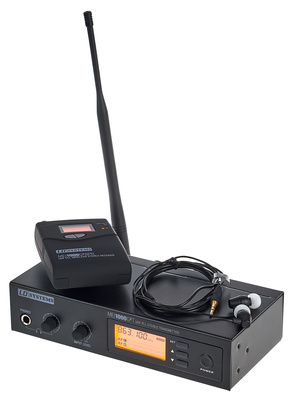Most of us, by now, have noticed people using In Ear Monitors (IEM). Whether it's a newscaster or presenter on TV, your favourite singer at a gig, or maybe even an audiophile who wants to shut the World out. The price of IEM has, and is, dropping which means you're going to see it more and more.
IEM earbuds are quite different to the regular earbuds you get with your iPod or similar device. Those things generally deliver the sound to the outside of the ear canal. You can usually still hear the outside World (how well will depend on how loud you're playing music!) and the quality of the speaker driver varies from low to medium (with a few exceptions from people like Bose).
An IEM earbud will normally need to be pushed right down inside the ear canal. This can feel a little odd at first, as not only is the sound being directed right onto the eardrum, but all external sound is (deliberately) blocked out. A lot of people talk about the weird feeling of isolation you get when first using them, but that fades after a few hours. If you can get through this (not everyone can) you will be delighted at the quality of sound you get with IEM.
That's the general theory of the thing you stick in your ear, and there are now thousand of IEM earbuds at every price point. Like anything, you get what you pay for. However, there is much more to IEM than just posh earbuds.
The idea of IEM for live music comes from a need to lower the on-stage sound levels both to improve the quality of the sound (for audience as well as performers) as well as protecting the performers hearing. Generally speaking, just a (rock) drummer playing on his own will generate enough sound to permanently damage his own hearing as well as anyone else's standing in close proximity. Add into that your bass player, guitarist, keyboards, vocals and heaven forbid micing-up instruments to reinforce the sound ... even a stage in a modest-sized bar has enough sound on it to cause deafness over the course of a few years.
There are other reasons too. I used to have at least one 'wedge' monitor pointing at my head when I played drums live. This was an attempt to hear vocals and keyboards over the sound of drums, bass and guitar. The problem is, I sing as well, so I'm wearing a headset microphone. Any 'noise' around me is also being picked up by my mic - which is also going through my monitor (as well as the front-of-house speakers) so you end up in an escalation zone. Desperately turning up the monitor louder and louder so I can hear the rest of the band, but all that 'mush' is going through my microphone and being thrown back at me at ever increasing volumes.
Switch to IEMs, and with a little electronic magic you can have the perfect mix in your ears which no-one else can hear, and no extra sound pollution on stage or out front to try and deal with.
That's the theory, the practise takes a little more thought (and money).
Firstly, you're wearing excellent earbuds and that's great, but where are you getting the sound from? Most people will take a feed from the main mixing desk and put it into a headphone amp. That's groovy, when all the instruments are going through the mixing desk, but at smaller venues they are probably not. Additionally, if everyone in the band is using IEM, they will probably all want a slightly different mix. For example, the bass player will want to hear his bass guitar and his backing vocals prominently in the mix. However, the vocalist might not want to hear the bass guitar or the bass player's vocals at all. Personally, I don't need to hear drums in my mix (I'm surrounded by the damn things), but I do need to hear all the other instruments a bit and my own backing vocals a lot. Unless you have a mixing desk with an awful lot of busses which can handle providing a separate mix for each musician as well as a master mix for the audience, you're going to have to compromise a bit.
For pubs, clubs and bars, I get around this by using my own headphone amp which has an option to control the volume of my own vocal microphone. I blend that with a feed I'm getting from the main mixer, which pretty much just vocals and keyboards. In order to hear the other instruments on stage you will need to have an ambient microphone there to add to the mix. This will pick-up a lot of the 'mush' I mentioned earlier. Fine for a monitor mix where you just want to hear the other instruments a bit, but you really don't want that shizzle being sent out to your audience at a thousand watts - so may sure you only use it in the monitors and not the outfront mix.
Finally, being tethered by a bunch of cables gets really old, really fast. Again the prices of wireless monitors are coming down a lot and you can easily add one to your set-up. However, multi-channel systems (which you will need if the whole band want to go wireless) can be expensive and complex - so that's something to consider.
My (personal) set-up: -

ACS T15 Single Driver earbuds

Fischer Amps In Ear Body Pack XL

Audix HT2 Headset Microphone

LD Systems wireless (for headset microphone)
And soon to be added: -

LD Systems MEI 1000 G2 wireless (for IEM)
No comments:
Post a Comment